See better and further. Measure more accurately. Drive more autonomously. Glass-SFR inspex - Precise optical quality measurement for ADAS windscreens
Perfect visibility for autonomous driving begins
with high-quality glass
The optical quality of windscreens directly influences the functionality of ADAS camera systems. Even the smallest distortions, scattering losses or changes in refractive power in the glass can lead to image errors that distort the decision-making basis of driver assistance systems and autonomous vehicles. Glass-SFR inspex from LaVision is a high-precision measurement system that quantifies these optical influences. The ISO 12233-compliant Spatial Frequency Response (SFR) analysis provides reliable measurement data – indispensable for the development and validation of safe ADAS functionality.
You are currently viewing a placeholder content from YouTube. To access the actual content, click the button below. Please note that doing so will share data with third-party providers.
More InformationOptical performance as the basis for autonomous driving
An ADAS system with autonomous driving level 3 or higher must work without visual impairments. The precise optical performance of the windshield is a decisive factor that directly influences the sensor function. Glass-SFR inspex combines proven optical inspection methods with automated image analysis and the highest accuracy in the repetition of measurements.
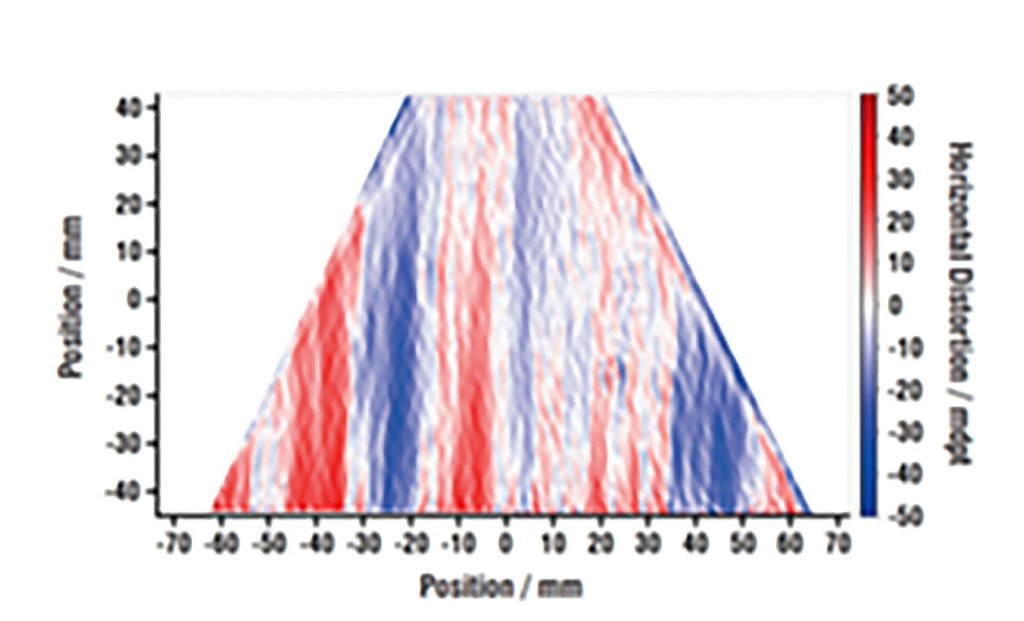
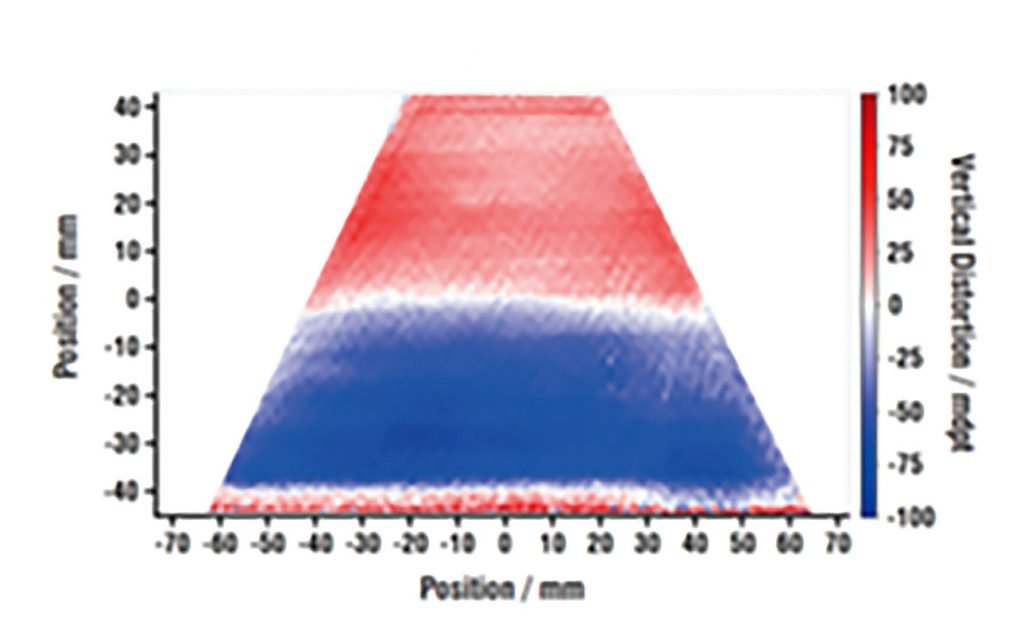
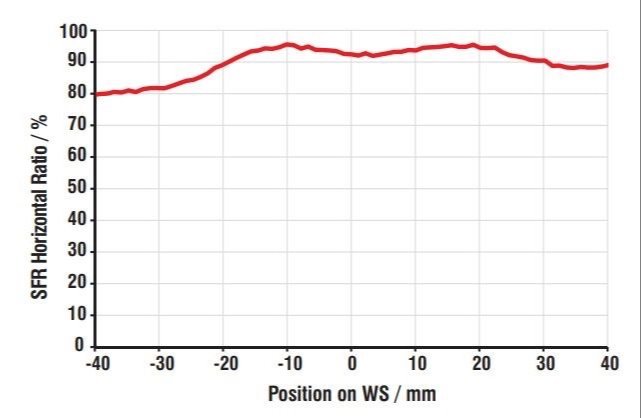
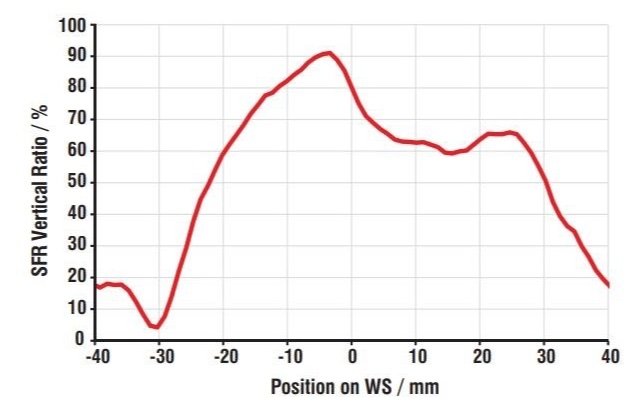
Analysis of the SFR of an ADAS camera area on a windshield using a vertical scan
Key features of
Glass-SFR inspex
- Precise SFR and MTF measurement: evaluation of contrast transmission and spatial frequency dependence according to ISO 12233.
- 2D refractive force analysis (optical power): Detailed diopter measurement of the windscreen to localize local distortions.
- Real-time capable data acquisition: High image sequences (transient mode) also enable dynamic test sequences.
- Reproducible measurement results: High repeat accuracy thanks to automated image evaluation.
- Modular system design: Can be integrated into both R&D test benches and series production lines.
- Original lens adaptation: Use of real ADAS camera lenses via camera adapter for system-specific test configurations.
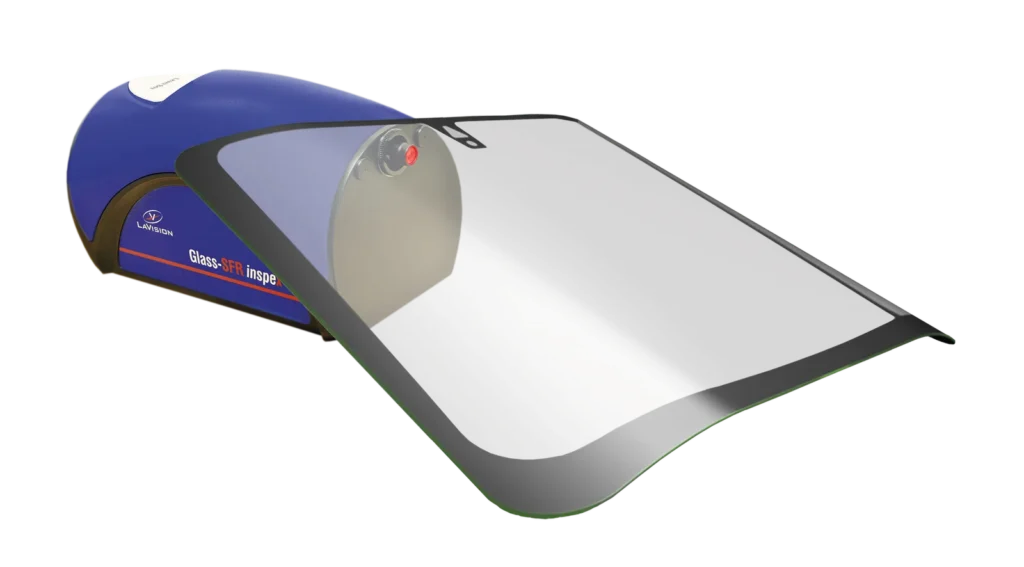
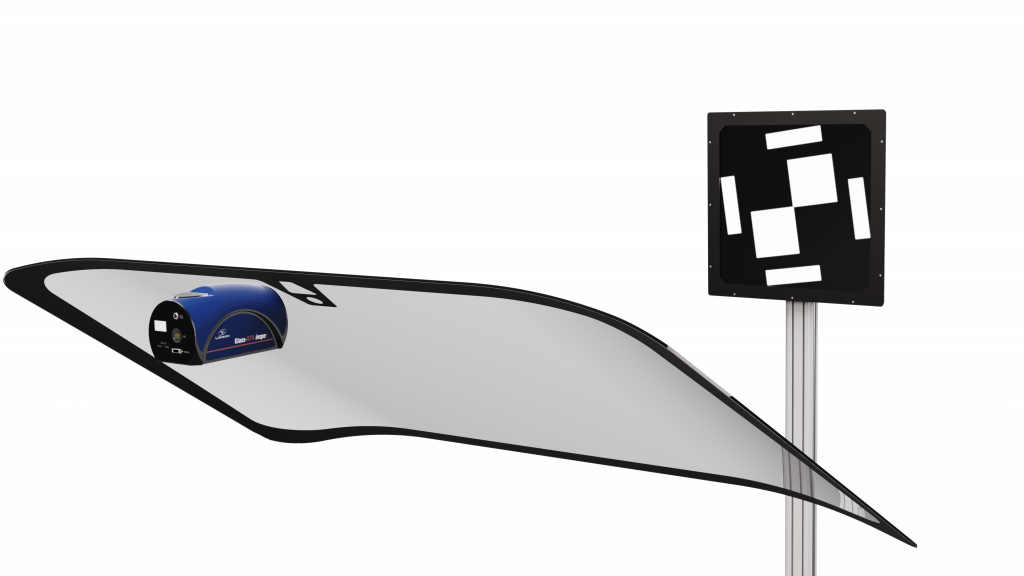
Key benefits - your advantages with Glass-SFR inspex
- Validated quality assurance:
Early defect detection reduces rework, rejects and recalls. - Faster development:
Faster approvals thanks to standard-compliant comparative measurements and structured reports. - Safeguarding AI image evaluations:
Precise image quality of the optical path prevents misinterpretations by AI systems. - Standardized processes:
Support of common standards (ISO 12233, UNECE). - Investment security:
Can be used across several generations of ADAS technology.
Test procedure in detail: SFR and MTF measurement
The Spatial Frequency Response (SFR) quantifies the resolution of optical systems over a broad frequency spectrum. It measures how well an image system can resolve fine details with varying structure size. SFR is a more general term for MTF (modulation transfer function). While MTF is only determined by harmonic spatial frequencies, SFR already contains these or can be obtained in other ways. The representation and interpretation of the MTF is identical to the SFR. Both methods offer a complete optical performance evaluation – from image sharpness to contrast and detail, all under realistic recording conditions through the windshield.
Optical power measurement - precise distortion analysis in 2D
With its market-leading high resolution, Glass-SFR inspex achieves outstanding measurement accuracy, especially in the relatively small ADAS window.
In addition to ISO-compliant image quality measurement, the optional power module can be used to create a 2D distortion map of the lens.
This uses a specially developed structured backlight that is projected through the lens onto a camera sensor surface. The diopter deviations are measured in both axes in order to precisely identify microlens effects, astigmatism or deformations of the glass contour.
Measurement parameters at a glance
Contrast (SFR/MTF):
- 0-100 %, accuracy < ±2 %
- ISO 12233-compliant measurement method for ADAS camera systems
Optical performance (2D refractive power):
- ±600 mdpt, Accuracy < ±3 %
- Full-surface 2D diopter measurement with < 1 mdpt
- Market-leading high-resolution analysis with spatial resolution
<0.2mm (FOV-dependent)
Frame rate:
- Flexible high recording speed depending on mode
That is why Glass-SFR inspex provides the sound basis for the future quality level of autonomous driving
With the progression of autonomous driving functions towards level 3 and higher classified systems, the role of the windshield is changing fundamentally: it is becoming an active sensor surface and therefore a safety-critical component. Even minor optical deviations in the ADAS camera’s field of view can influence image processing – with potentially serious consequences for system reliability. Glass-SFR inspex supports this change by:
Detailed cause-
effect analysis
Local deviations such as refractive errors, contrast reduction or structural glass distortions are precisely localized using measurement technology and their effects on image quality are made comprehensible – ideal for development departments and quality managers.
Shorter development cycles thanks to automated testing processes
Flexible lens selection thanks to modular camera adapters
The system allows the use of original ADAS camera lenses or defined reference lenses – crucial for realistic simulations and a valid evaluation of the image quality in the vehicle configuration.
Convincing added value for our industry partners
- ADAS camera development:
Reference measurements for calibration, tuning and validation of optical paths - OEM quality test bench:
Series testing of vehicle glazing before release - Vehicle glass suppliers:
Validation and documentation of conformity with OEM requirements
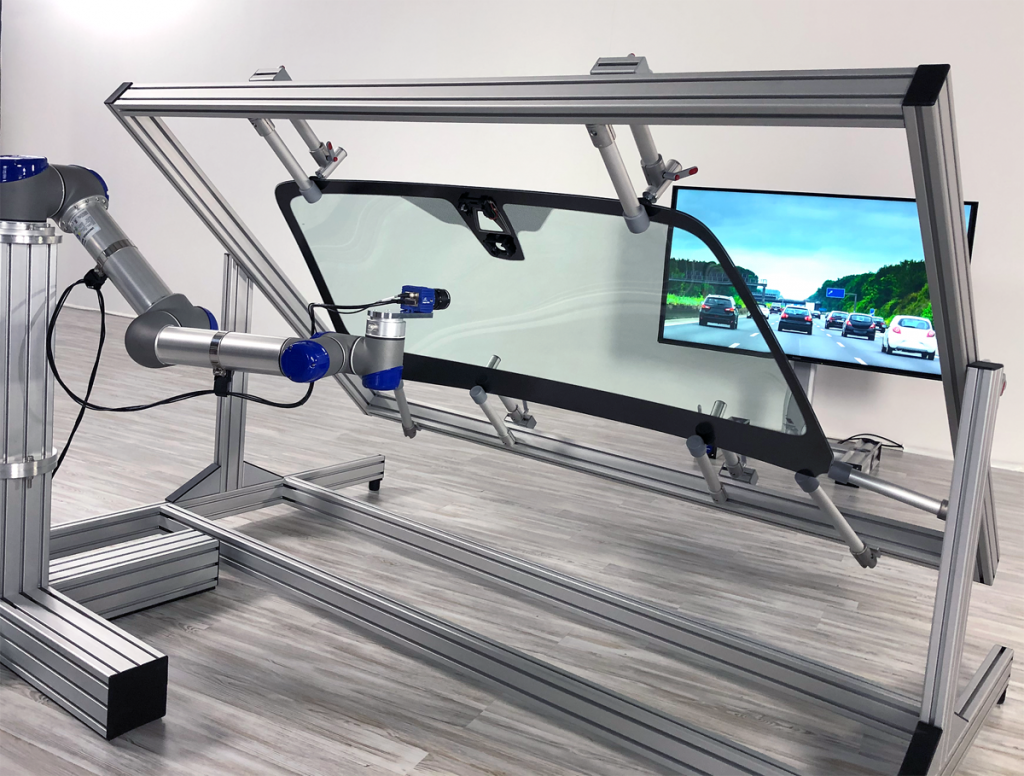
Compatibility & integration
Glass-SFR inspex can be seamlessly integrated into your production environment and your existing quality assurance processes.
The system architecture enables connection to MES or individual OEM data formats. Reports can be structured in accordance with standards (e.g. ISO 12233) and archived in an audit-proof manner.
Application profile - industry solutions at a glance
Vehicle manufacturer
- Ensuring image quality as early as the prototype stage
- Reduction of series risks through optically tested glazing
- Integration into series EOL test benches
Reliable series release through objective glass testing
ADAS developer
- Realistic tests with original lenses
- Validation of algorithmic performance with glass deviations
- Development of robust image processing
Glass manufacturer
- Proof of compliance with OEM standards
- Audit-proof measurement reports for audit processes
- Reduction of rejections in incoming goods
Frequently asked questions - Technical answers for ADAS experts
Why is a classic diopter measurement no longer sufficient for evaluating ADAS windscreens?
Autonomous vehicles use highly sensitive ADAS cameras to anticipate traffic situations. Even minor distortions or loss of contrast in the glass can lead to incorrect image information and faulty object recognition. Glass-SFR inspex enables a differentiated assessment of the optical quality before safety-critical situations arise.
Which test parameters are recorded exactly with the Glass-SFR inspex?
How realistic is the test environment compared to actual driving?
By using original ADAS camera lenses or standardized reference lenses, Glass-SFR inspex reproduces the real optical situation in the vehicle very accurately. The modular test setup makes it possible to test windows in the installed state or under defined angle conditions – for example, analogous to the installation situation in a vehicle interior. This means that even critical visibility areas (e.g. over 60 m visibility distance in the far range) can be tested in a practical manner. The system thus delivers reproducible, but at the same time vehicle-related results for the assessment of sensor performance.
What advantages does Glass-SFR inspex offer when preparing for an audit or approval?
How complex is the integration of the system into existing test environments?
The system is designed for easy integration into laboratory or production environments. Interfaces to MES or LabView systems are already provided or can be added via standard protocols. The user interface is intuitive and calibration is automated with referenced targets. Depending on the application, Glass-SFR inspex can be configured either as a stand-alone test station or as an inline test module. Training and support services from LaVision also ensure rapid implementation in existing processes.
When transparency becomes a safety issue.
Find out how you can use Glass-SFR inspex to objectively ensure the quality of your glazing for ADAS systems so that autonomous driving is guaranteed in every situation.
